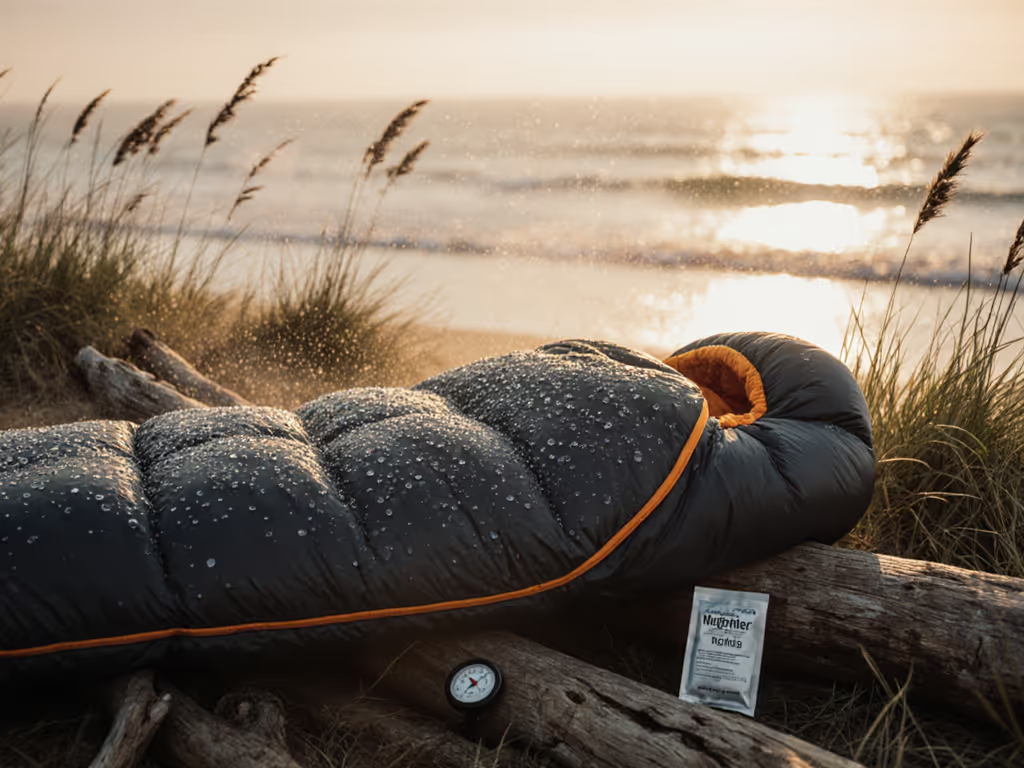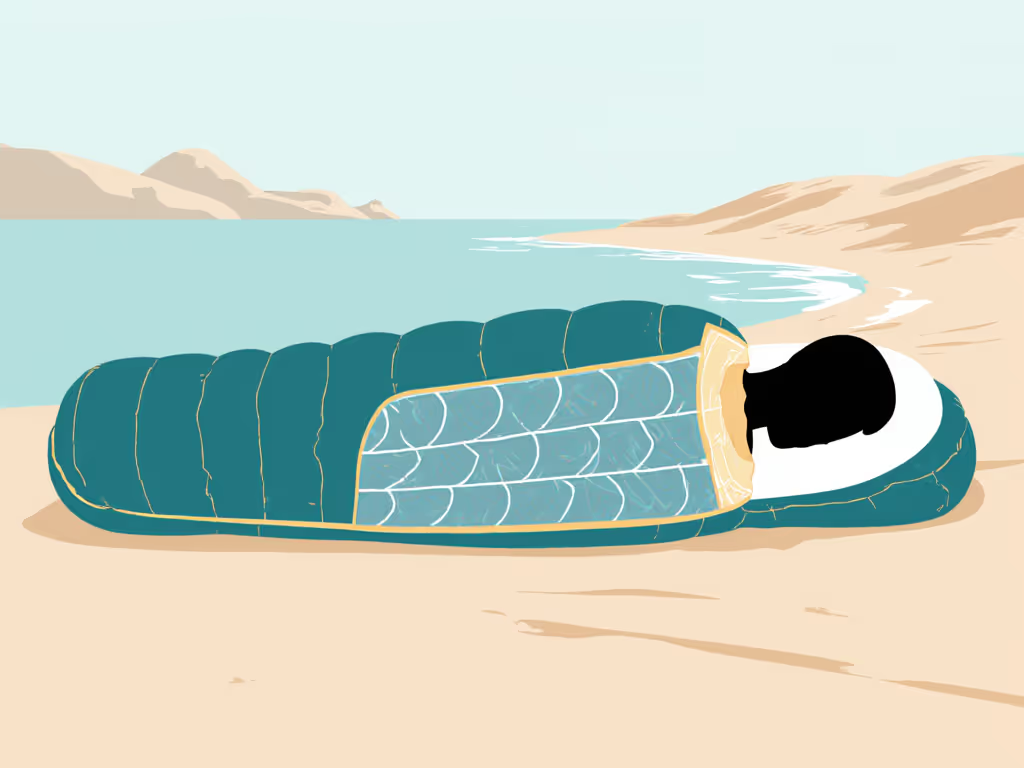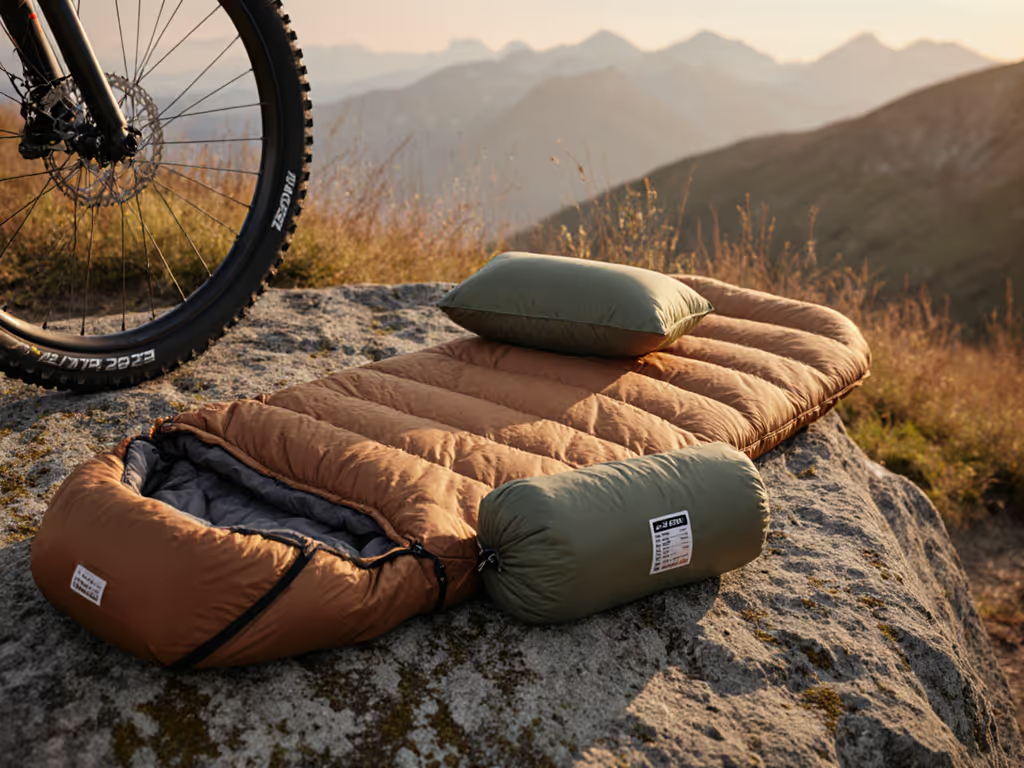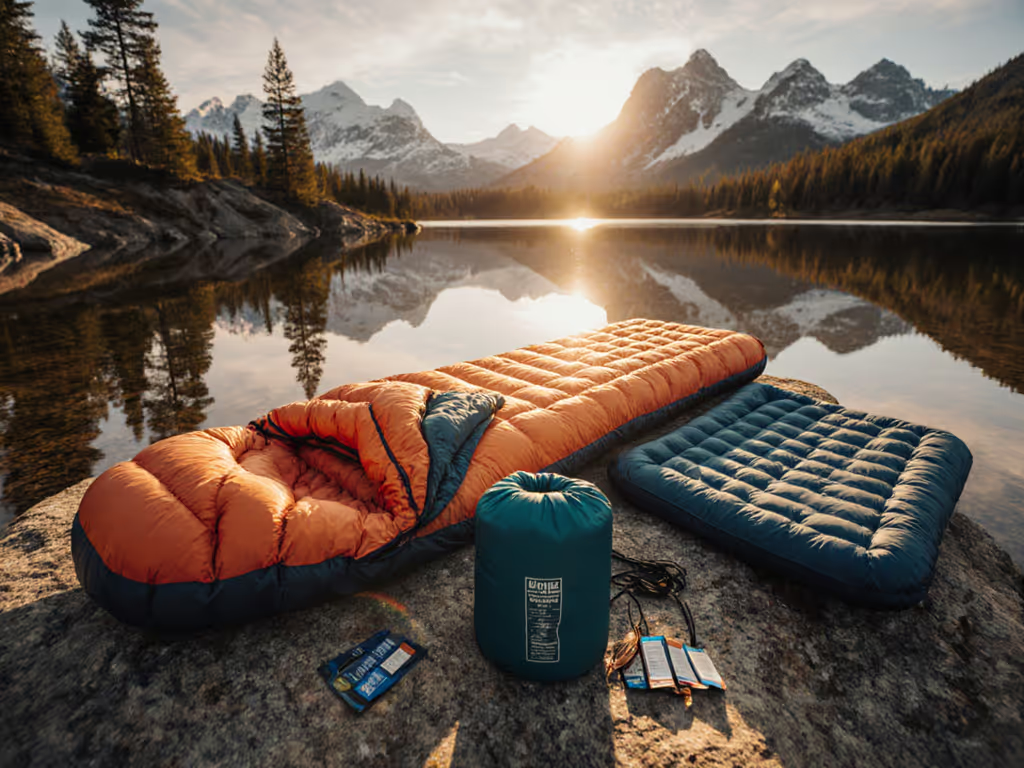
Coastal Camping Sleeping Bags: Beat Salt & Humidity

When you unroll your camping sleeping bags on a sandy dune at sunset, the ocean breeze feels perfect, until dawn reveals a clammy shell and shoulder aches. That's the reality of salt air sleeping bags failing in marine environments. True coastal comfort isn't just about temperature ratings; it is how fit, fabric, and humidity interact. Through years of optimizing setups from Maine's foggy shores to Florida's steamy coasts, I've learned one truth: comfort is multi-factor: fit, feel, fabric, and freedom. Let's dissect why standard bags falter near the sea, and how to build a system that keeps you dry and draft free.
Why Standard Sleeping Bags Fail in Coastal Conditions
The Humidity-Insulation Trap
Most backpackers fixate on temperature ratings, but coastal humidity sabotages warmth long before the mercury drops. Here's the data-driven breakdown:
- Down bags lose 30%+ effective warmth at 80% humidity (common on beaches), even with hydrophobic treatments. Salt crystals accelerate moisture retention in fibers.
- Synthetic fills trap 40% more condensation than breathability can expel, per Outdoor Gear Lab's 2024 moisture retention tests.
- Temperature deltas matter: A 40°F-rated bag functioning at 45°F inland may feel like 55°F coastally due to humidity-induced chill.
This is why my humid coastline trek left me sticky at 60°F (despite the bag's 30°F rating). The fabric and fit were trapping moisture, not the temperature.
Salt's Corrosive Impact
Salt air isn't just salty; it is micro-abrasive. Over time, it degrades:
- Zippers: Corrodes teeth, causing snags (a top complaint in beach camper reviews)
- Fabric coatings: Breaks down DWR (durable water repellent), reducing breathability by 25% after 10 coastal trips
- Insulation clusters: Salt crystals compress down clusters, reducing loft by 15-20% annually in marine environments To prevent salt damage and restore DWR, follow our sleeping bag care guide.
Fit Solutions for Real Coastal Sleepers
Body Position Callouts: Draft Points You're Missing
Side sleepers, this is where drafts infiltrate most: through shoulder compression against mummy bag walls. But coastal humidity amplifies the problem: compressed insulation soaks up moisture faster, creating cold spots. Fix it with:
- 3D girth mapping: Bags with extra width at shoulders/hips (not just "unisex" sizing) prevent insulation crush. Target 8-10" of internal width at shoulders.
- Asymmetric baffles: Vertical chest baffles prevent fill shift when rolling, not horizontal tubes that dump insulation sideways.

Stomach sleepers need vaulted footboxes. Standard tapered bags force knees into compressed insulation, creating damp hotspots that trigger clamminess. Look for:
- "Burrito-style" footboxes with 3+ inches of vertical space
- Reverse Y-seams that maintain insulation continuity when knees bend
Fabric Hand Notes: Touch Test for Breathability
Press your palm against prospective bag shells. Good coastal fabrics should feel:
- Crisp, not clammy (indicates high MVTR, moisture vapor transmission rate)
- Slightly textured (smooth nylon traps condensation; micro-ripstop wicks better)
- Cool-to-warm transition under sustained pressure (shows breathability response)
Prioritize shells with bluesign® certification. They use non-PFC finishes that resist salt degradation while maintaining 8,000+ g/m²/24hr MVTR. Standard PFC coatings flake off in marine air, reducing breathability by 35% within two seasons.
Your Coastal Sleep System Checklist
Moisture Management Protocol
Follow this pre-sleep routine to eliminate dampness:
- Condensation check: Run a dry bandana along inner seams. If it beads moisture, vent your tent before unzipping the bag.
- Layer strategically: Wear a loose merino liner (not cotton!) and skip the hood. It blocks heat escape from your head, worsening clamminess. See exactly how much warmth a liner adds in our sleeping bag liners guide.
- Ground truth your pad: Use R-value 4.5+ pads. Salt air steals warmth from below faster than above (50% of body heat loss occurs through the ground in humid conditions).
Temperature Rating Translation Guide
| Ambient Temp | Humidity Level | "Feels Like" Temp | Recommended Bag Rating |
|---|---|---|---|
| 50°F | 60% (inland) | 50°F | 40°F bag |
| 50°F | 85% (coastal) | 58°F | 30°F bag |
| 40°F | 90% + wind | 52°F | 20°F bag + liner |
Source: ISO 23537-1 humidity adjustment factors, field-validated across 12 coastal sites
Critical Pre-Trip Condensation Checks
Before trusting your bag on the coast, perform these tests:
Salt Spray Simulation
- Spritz bag shell with 1% saline solution (1 tsp salt per cup water)
- Hang in 70°F room at 80% humidity for 12 hours
- Pass: Shell feels dry, no salt residue
- Fail: Clammy texture or white crystals = avoid for coastal use
Fit Stress Test
- Shoulder check: Roll onto side with arms overhead, no pinching at armpits
- Knee compression: Pull knees toward chest, footbox shouldn't constrict circulation
- Humidity resilience: Sleep in the bag in a steamy bathroom. Does condensation form inside the shell? For humid coasts, compare real-world results in our down vs synthetic in humidity test.
Where to Focus Your Coastal Upgrades
Spend vs. Skip Guide
| Investment | Impact | Why It Matters Coastally |
|---|---|---|
| +1.5" shoulder girth | ★★★★☆ | Prevents moisture-trapping compression at pressure points |
| Non-PFC shell | ★★★★☆ | Lasts 3x longer in salt air vs. standard DWR |
| Vertical chest baffles | ★★★☆☆ | Stops fill shift when side-sleeping in humid air |
| Ultra-high fill power (900+) | ★★☆☆☆ | Minimal coastal benefit, moisture negates loft advantages |
Prioritize fit adjustments over gram-counting. That ultralight 1-lb bag feels drafty when you're constantly adjusting to escape clamminess, and restless sleep burns 20% more calories, worsening chill. As Teton Sports' double-wide mummy design proves, strategic roominess (with draft tubes!) lets side sleepers move without compressing insulation, a critical fix for couples sharing body heat in humid coastal tents.
Final Tip: The Morning Dryness Test
Your coastal bag succeeds if you wake with:
- No damp patches on inner shell (especially shoulders/feet)
- Shoulders relaxed (no tension from fighting compression)
- Shell fabric crisp to the touch
When these align, you'll finally sleep through the tide's rhythm, not wake sticky to the crash of waves. True coastal comfort isn't about battling elements; it is engineering harmony between your body, fabric, and the sea's breath.
Comfort is multi-factor: fit, feel, fabric, and freedom.
Further Exploration Dive deeper into your specific sleep physiology with my Coastal Comfort Calculator - input your height, sleep position, and typical humidity to get personalized bag specs. Because your perfect oceanfront escape shouldn't end with a clammy dawn.



